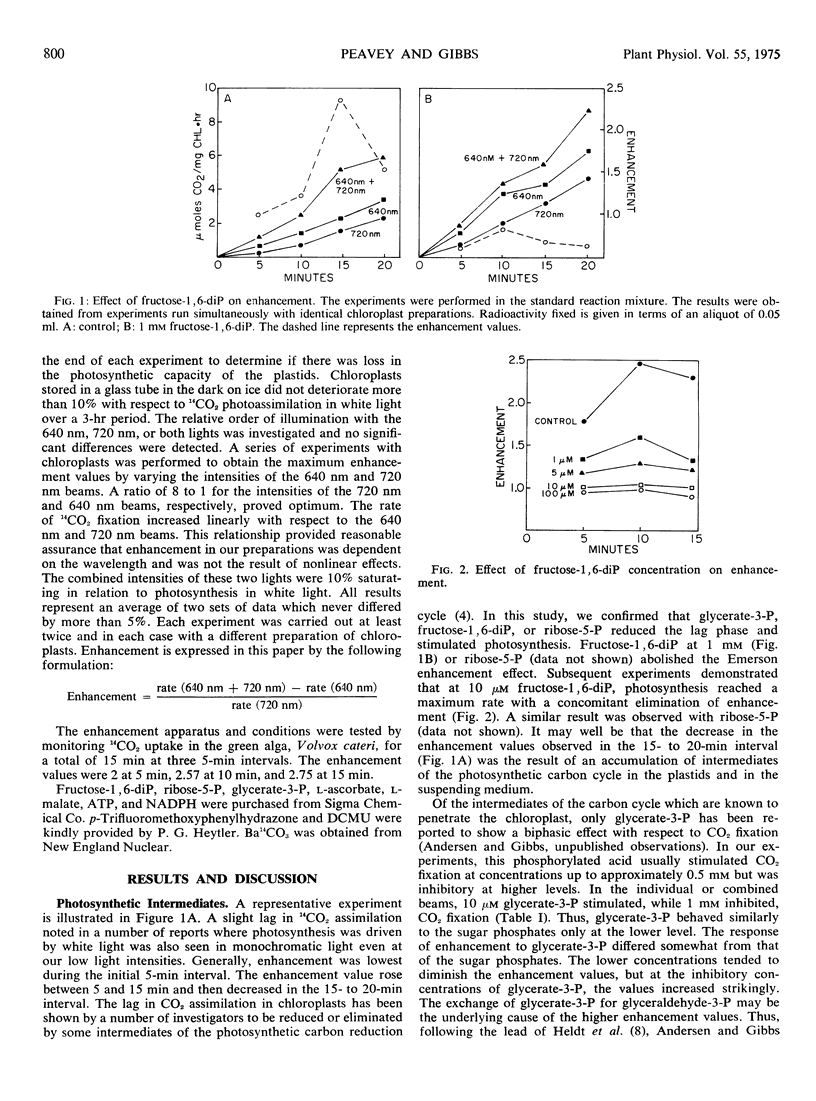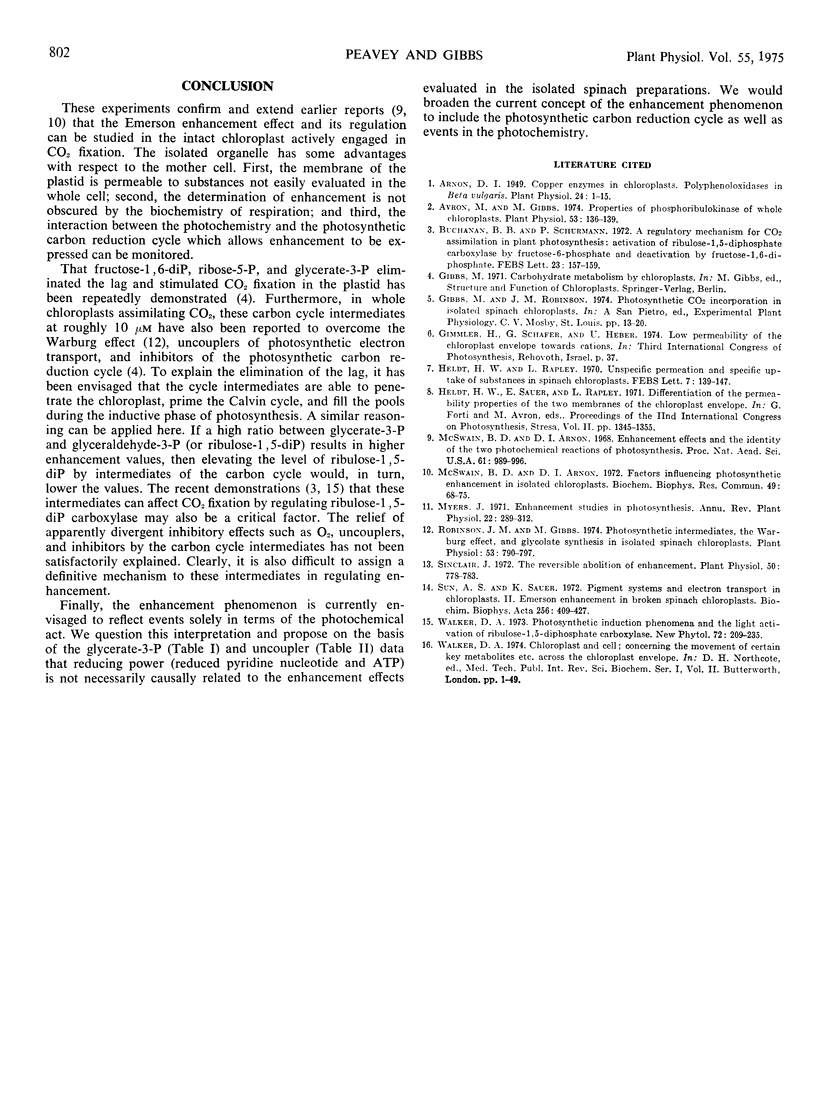Abstract
The Emerson enhancement effect was evaluated in the intact spinach (Spinacia oleracea var. Long Standing Bloomsdale) chloroplast by monitoring the uptake of 14CO2 during illumination by 640 nm and 720 nm lights. Low levels (about 10 μm) of fructose 1,6-diphosphate, ribose 5-phosphate, and glycerate 3-phosphate stimulated the rate of photosynthesis and abolished enhancement values observed in their absence. Concentrations of the two sugar phosphates at levels of 1 mm responded similarly. In contrast, 1 mm glycerate 3-phosphate inhibited the rate of photosynthesis and increased enhancement. The exchange of glycerate 3-phosphate for glyceraldehyde 3-phosphate was speculated to be a factor underlying the decrease in photosynthesis and the increase in enhancement. Glucose 6-phosphate, NADPH, and l-malate did not influence photosynthesis or enhancement.
The uncoupler, p-trifluoromethoxyphenylhydrazone, decreased the rate of photosynthesis but did not change the enhancement values. ATP (0.2 to 1 mm) had an occasional stimulating effect on CO2 fixation but no effect on enhancement. Magnesium ions inhibited photosynthesis and decreased the enhancement values. It was concluded that the enhancement phenomenon reflects events of the photosynthetic carbon reduction cycle as well as the photochemical act.
Full text
PDF



Selected References
These references are in PubMed. This may not be the complete list of references from this article.
- Arnon D. I. COPPER ENZYMES IN ISOLATED CHLOROPLASTS. POLYPHENOLOXIDASE IN BETA VULGARIS. Plant Physiol. 1949 Jan;24(1):1–15. doi: 10.1104/pp.24.1.1. [DOI] [PMC free article] [PubMed] [Google Scholar]
- Avron M., Gibbs M. Properties of phosphoribulokinase of whole chloroplasts. Plant Physiol. 1974 Feb;53(2):136–139. doi: 10.1104/pp.53.2.136. [DOI] [PMC free article] [PubMed] [Google Scholar]
- Buchanan B. B., Schürmann P. A regulatory mechanism for CO 2 assimilation in plant photosynthesis: activation of ribulose-1,5-diphosphate carboxylase by fructose 6-phosphate and deactivation by fructose 1,6-diphosphate. FEBS Lett. 1972 Jun 15;23(2):157–159. doi: 10.1016/0014-5793(72)80329-6. [DOI] [PubMed] [Google Scholar]
- Heldt H. W., Rapley L. Unspecific permeation and specific uptake of substances in spinach chloroplasts. FEBS Lett. 1970 Apr 2;7(2):139–142. doi: 10.1016/0014-5793(70)80140-5. [DOI] [PubMed] [Google Scholar]
- McSwain B. D., Arnon D. I. Enhancement effects and the identity of the two photochemical reactions of photosynthesis. Proc Natl Acad Sci U S A. 1968 Nov;61(3):989–996. doi: 10.1073/pnas.61.3.989. [DOI] [PMC free article] [PubMed] [Google Scholar]
- McSwain B. D., Arnon D. I. Factors influencing photosynthetic enhancement in isolated chloroplasts. Biochem Biophys Res Commun. 1972 Oct 6;49(1):68–75. doi: 10.1016/0006-291x(72)90010-1. [DOI] [PubMed] [Google Scholar]
- Robinson J. M., Gibbs M. Photosynthetic intermediates, the warburg effect, and glycolate synthesis in isolated spinach chloroplasts. Plant Physiol. 1974 Jun;53(6):790–797. doi: 10.1104/pp.53.6.790. [DOI] [PMC free article] [PubMed] [Google Scholar]
- Sun A. S., Sauer K. Pigment systems and electron transport in chloroplasts. II. Emerson enhancement in broken spinach chloroplasts. Biochim Biophys Acta. 1972 Feb 28;256(2):400–427. [PubMed] [Google Scholar]


